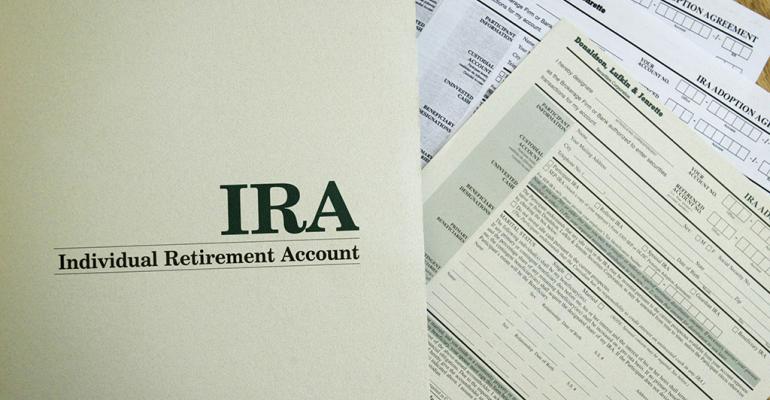What is UBIT in an IRA?
UBIT in an IRA is a real pain in the rear… at least if you’re IRA is onshore. When you take an IRA offshore, UBIT is not big deal. Here’s an explanation of UBIT in an IRA and how to deal with it.
UBIT stands for Unrelated Business Income Tax. We call this type of income in an IRA UBI and the tax you pay on that income is UBIT. We investors hate UBIT because it results in our IRA investments being taxed at around 35%.
That’s right, not all investments made by an IRA are tax free (ROTH) or tax deferred (traditional account). Some investments are taxable before they reach your IRA account. UBIT is the name for the tax assessed on profits derived from certain investments in your IRA or other plans (401-k, etc.).
UBIT applies to three types of investments in your IRA:
- When you buy real estate with a mortgage,
- When you buy stocks or other assets with leverage, and
- When you invest in an active business that’s not taxed at the corporate level.
When you buy a rental property with a mortgage, income and capital gains attributable to that mortgage are considered UBI. Thus you will pay 35% in UBIT on these profits before they reach your IRA.
For example, you buy a rental property in your IRA. 50% of the money for the purchase comes from your IRA account and 50% from a nonrecourse mortgage.
Because 50% of the money came from a loan, half of the net rental profits each year are UBI and taxable. The other half flow into your IRA tax free.
Likewise, when you sell the property, half of the capital gain is taxed at 35% and the other half flows into your IRA tax free.
- Yes, that’s correct. A UBI capital gain is taxed at ordinary income rates and not the 20% long term capital gain rate.
The same goes for stocks and other investments made with leverage. Any income earned on that leverage is taxable at 35%, not long term capital gains rates.
This can get really bad in high leverage accounts like as currency / FX trading. I’ve seen leverage at 100 to 300% offshore. Basically all the gains are UBI and you pay UBIT at 35% on each trade.
Last but certainly not least are investments into active businesses from your IRA. When you invest in an active business that passes untaxed income to you, this is UBI and taxable at ordinary income rates.
For example, you invest in a US partnership using IRA money. The partnership issues a K-1 to your IRA LLC reporting net profits. If that K-1 was issued to an individual, he or she would add it to their tax return and pay tax on the profit.
The same goes for an IRA account. You don’t get to deposit untaxed business income into your IRA. You must pay tax on those profits first, just as an individual would. Of the three categories, this one makes the most sense. Without it, all businesses would be held in IRAs and no one would ever pay tax on the profits.
If that same business were operated through a US corporation rather than a partnership, the entity would pay corporate tax at 35% and pass a dividend to your IRA. This is not UBI because the income was taxed at the corporate level. A dividend from a corporation is not UBI while a K-1 or other distribution of pretax money is UBI.
When you have UBIT in an IRA, you must file IRS Form 990-T to report the gain. Your IRA pays this tax, not you (the IRA owner). So, you better have enough cash in the account to cover the bill.
Above and in other articles I always refer to UBIT in an IRA as being taxed at ordinary income rates. This is the simple way to say it… one we can all relate to. Technically, the UBIT rate for an IRA is found in the Trust and Estate tax table, not the ordinary income tax tables.
Trusts and estates have a sliding such that most UBIT will be taxed at 33% or 39%. This is basically the same as the ordinary income rate… certainly close enough for a free blog article!
That’s everything you need to know to understand UBIT in an IRA. Now, here’s how to avoid paying it.
Any time you invest in the United States with leverage, or in an active business using your IRA, you will pay UBIT. There’s no way around it. If you make those investments outside of the United States, you can eliminate UBIT by forming a UBIT blocker corporation.
The same US rules apply to IRAs offshore that apply onshore. Therefore, a distribution of untaxed business profits from a foreign partnership to an offshore IRA LLC is taxable as UBI.
Also like the US, a dividend from a foreign corporation is not UBI and not taxable when it reaches the offshore IRA LLC.
So, if you will make an investment into a foreign business, or are using leverage, you can place an offshore corporation in between the investment and your IRA. Your IRA invests into the corporation and the corporation invests into the business or buys the rental property.
Money flows from the investment back to the corporation. Then the corporation issues a dividend to the offshore IRA LLC. Because dividends are not UBI, no UBIT is payable. We call this a UBIT blocker corporation.
You might be thinking to yourself, hey, that’s pretty slick. Why can’t I do the same thing in the United States? Why are UBIT blockers only available offshore?
Because, when you put a US corporation in between your IRA and your investment, that corporation must pay tax on any gains derived. The US corporation pays 35% corporate tax on US source income. All you’ve done is converted UBI into corporate income taxable at corporate rates instead of trust and estate rates.
The key to an offshore UBIT blocker is that the corporation must be set up in a tax free jurisdiction. If you pay zero corporate tax, you can pass profits from the investment to the corporation and then to the LLC tax free. Once converted from ordinary income into a dividend, UBI is eliminated and the IRA gets to receive the transfer tax free.
I hope you’ve found this article on UBIT in an IRA interesting. For more information on how to setup an offshore IRA LLC with UBIT blocker, please contact me at info@premieroffshore.com or call us at (619) 483-1708.












Leave a Reply
Want to join the discussion?Feel free to contribute!